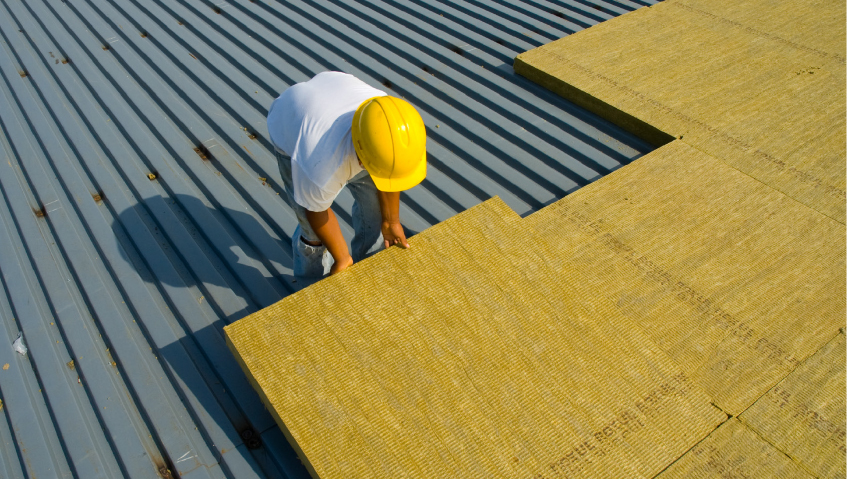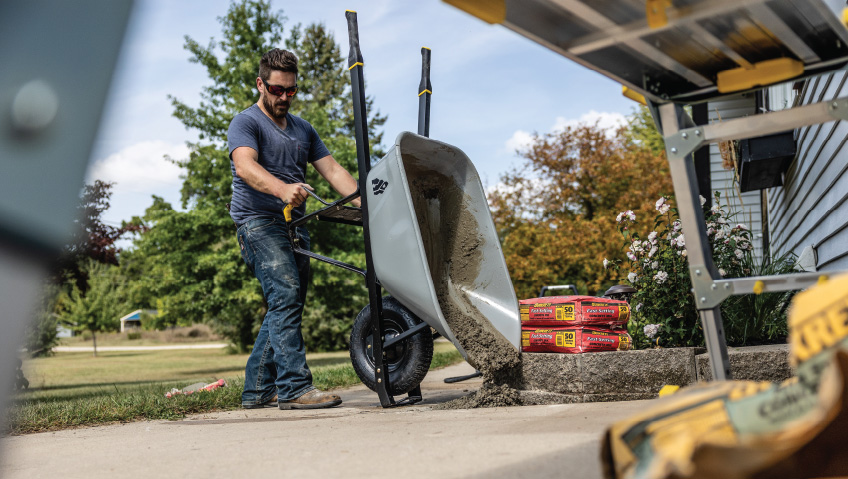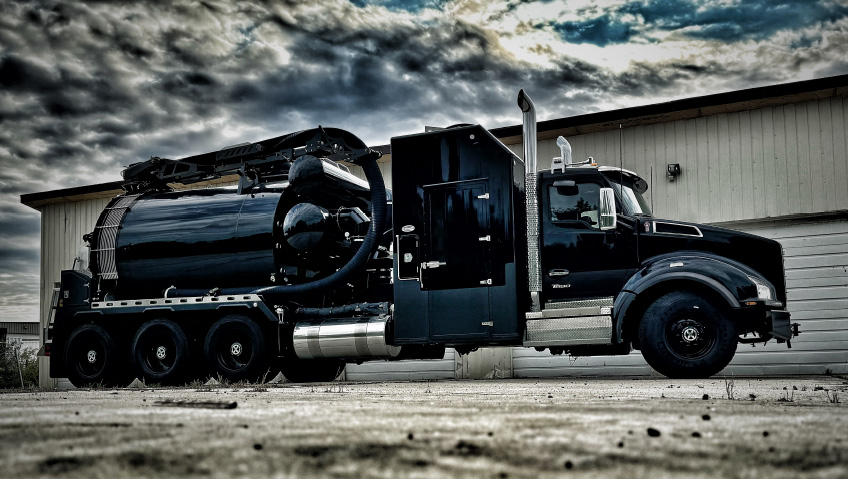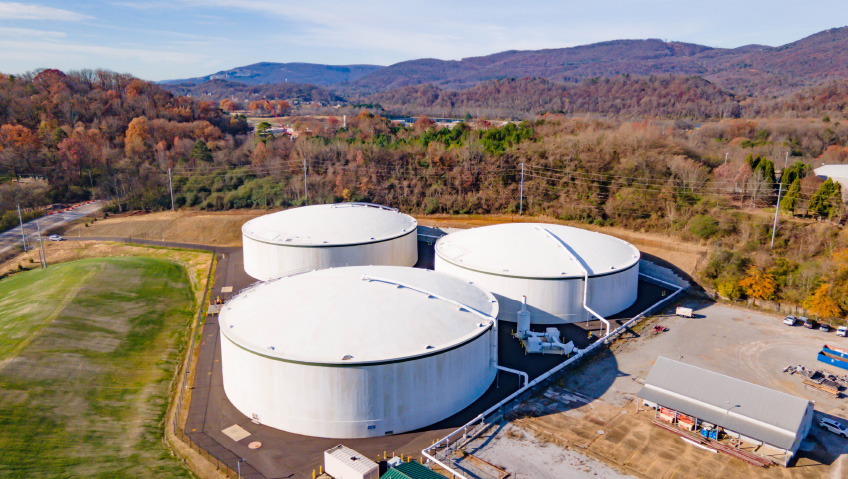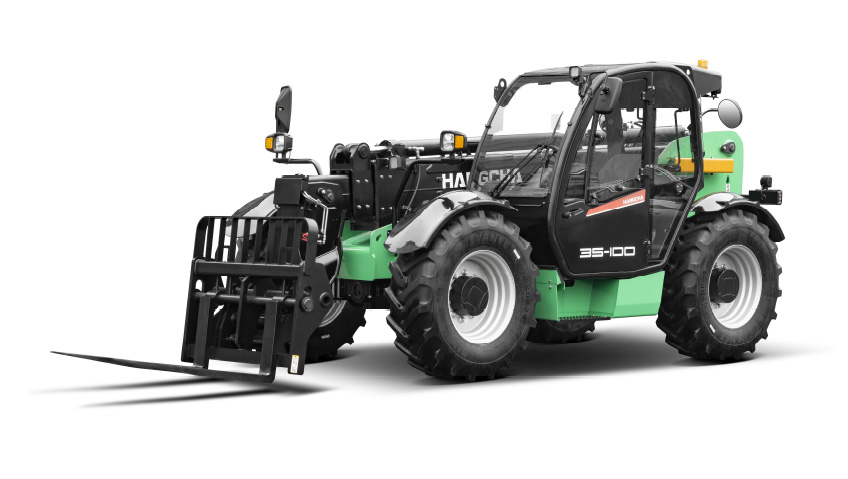Where some see challenges, others see possibility.
Such is the case with leading stone wool insulation manufacturer, ROCKWOOL, and its North American President Rory Moss, who recently shared his company’s belief that it is possible to build a better business by building a better world.
It’s a big statement to make, there’s no question. After all, the world is currently facing some of the greatest challenges of modern times, including the effects of a global pandemic which continues to have deep social, societal, and economic impacts worldwide. While some parts of the world are beginning to emerge from the pandemic, another global challenge is becoming more and more impossible to ignore—climate change.
The moniker is, however, much too passive. It’s not a slow, gentle change that is hardly noticed amid the rush of the 24-hour news cycle and other pressing business. It’s an active crisis that demands great urgency, one that has rightly captured the collective attention of world leaders, policy makers, and experts.
Making more possible
In its 2018 special report on Global Warming of 1.5°C, the United Nations Intergovernmental Panel on Climate Change (IPCC) confirmed that we are already witnessing impacts in every region of the world, with harmful carbon emissions prompting an unprecedented and alarming rate of global warming. The effects are substantial, with more frequent and more extreme climate events that threaten ecosystems, put species at risk, and present great challenges to cities and industry. Although the science is clear and experts agree that we are already experiencing serious change in our climate, it is not too late to take action to limit the impacts.
Some countries and regions have moved quickly to reverse the trend. Targeting change in the building industry is front and center, with retrofits pegged as the most effective and efficient means to move the needle, since existing buildings account for 38 percent of CO2 emissions and 40 percent of primary energy demand.
As a result, throughout North America and around the world, model energy codes are evolving to deliver greater energy efficiency. In progressive cities, local code adoption and policy development have also strengthened their position to increase energy reduction targets with the inclusion of building efficiency requirements. A prime example is New York City’s Climate Mobilization Act, introduced in 2019. It includes a series of bills setting specific energy efficiency requirements and emissions limits for most buildings over 25,000 square feet, as well as supplementary financing for sustainable retrofits.
For its part, ROCKWOOL recognizes that a combination of leadership, legislation, incentives, education, and the application of innovative building solutions and technologies can help us reach our critical climate action targets. Its products, made of naturally abundant and recycled materials, are perfectly suited to help achieve even the most ambitious energy targets and are routinely integrated into high-performance buildings built to the industry’s highest standards such as Passive House, Net Zero, LEED v4, Living Building and other efficiency accreditations.
“We are uniquely positioned to make a difference in the fight against climate change, while also tackling a number of other challenges brought about by urbanization, intensification, and development,” says Rory Moss, President, ROCKWOOL, North America.
Although cities take up only two percent of the world’s land surface, they generate more than 70 percent of emissions and consume over two-thirds of the world’s energy. Moss notes that by using modern solutions such as stone wool we can help reduce the consumption of existing, energy-inefficient buildings through deep energy retrofits.
“Deep energy retrofits and renovation of older buildings are vital if cities want to tackle their climate emissions on a large scale,” says Moss. “Focusing on the building envelope and creating tighter, better insulated buildings is key. Energy renovation could provide up to 55 percent of the GHG emissions reductions needed to meet the 2030 targets and align cities with a 1.5°C trajectory.”
Typical renovation rates are 1 to 2 percent of the building stock per year, with an average energy use intensity (EUI) reduction of less than 15 percent. However, to reach sustainable development and climate targets, EUI reductions should be between 30 and 50 percent. We can’t move the needle enough with new construction alone. Retrofits and renovations must play a greater role. This is important because the global rate of urbanization and economic growth means that the primary demand for energy will likely double during this century. Approximately 50 percent of the existing building stock is predicted to still be in use by 2050. Tackling energy inefficiency could reduce the carbon footprint of the existing building stock by as much as 70 percent.
Vision: Driving the built environment—and the world—forward
“Our stone wool insulation solutions can reduce direct energy demand, cut down emissions, and provide a healthier built environment for people, while also creating safe buildings and quieter spaces that can contribute to occupant wellbeing and productivity,” says Moss.
Now is an ideal time to reimagine what’s possible. As a highly solutions-based, forward-thinking company, ROCKWOOL aims to transform communities and improve their whole way of living.
Moss, himself, is passionate about creating safer communities. He was in the United Kingdom at the time a fire broke out in the 24-storey Grenfell Tower in West London on June 14, 2017. Starting in a fourth-floor kitchen, flames soon spread upwards, quickly engulfing the entire upper stories of the structure. The subsequent inquiry into the fire revealed that highly flammable foam plastic insulation combined with flammable aluminum composite cladding (ACM) served to re-radiate heat and flames. This contributed to the fire and rapidly fueled its spread. The air gap in the exterior wall system also created a stack effect that further exacerbated flame spread.
The tragedy, in which 72 people lost their lives, led to a change in regulations which now require the use of noncombustible materials, such as ROCKWOOL stone wool, in the external walls of new buildings including all new residential housing, hospitals, residential care premises, boarding school dormitories, and student accommodation greater than 18 meters in height.
The incident itself also sparked intense debate about material selection as it pertains to a building’s fuel load. With stricter energy codes calling for higher levels of insulation, ROCKWOOL, along with many experts in the field, urged code developers to re-examine the use of combustible materials such as foam plastics in high-rise buildings and to employ stricter testing that looks at fire behavior such as leap-frogging and vertical flame spread to better understand and prevent the rising incidents of façade fires globally. ROCKWOOL advocates a holistic approach to fire-safe building design.
“We’ve long been vocal in advocating for safer buildings,” says Moss. “We are invested in developing solutions to advance the safety of the built environment. Our noncombustible stone wool insulation products are often the preferred choice in fire-first applications.”
ROCKWOOL insulation resists fire up to 2,150°F (1,177°C), inhibiting the spread of flames, and it provides valuable extra time for occupants to get to safety. ROCKWOOL ensures its products are rigorously tested by accredited third-party laboratories. ROCKWOOL stone wool has demonstrated a smoke development index of 0 and a flame spread index of 0, when tested in accordance with ASTM E84 (UL 723). ROCKWOOL insulation also won’t contribute to toxic smoke or harmful gases in the event of a fire. It is often a key component in many NFPA 285-compliant assemblies. Additionally, it’s used to achieve fire-rated wall and roofing assemblies in tall wood and mass timber buildings, as well as in regions where fire risk is elevated, such as in wildland-urban interface (WUI) zones.
Urban sprawl and greater density have expanded the size and number of WUI areas across North America, increasing the number of homes and buildings at risk, while global warming and climate change have increased the prevalence and intensity of storm activity, further escalating wildfire incidents. ROCKWOOL understands the value of engineering products that can withstand fire. Its participation in fire testing and thought leadership in the fire safety community has earned the company a strong reputation within the industry and among fire safety professionals. ROCKWOOL is a member of National Fire Protection Association, a supporter of the National Association of State Fire Marshalls, a proud sponsor of the Fire Marshall’s Public Safety Council, and a member of Fire Safe North America.
“In addition to safety, our goal is to design products that do more amid greater challenges,” says Moss. “Stone wool provides a wide range of benefits to buildings and people by creating more durable, resilient and comfortable structures. Its products help create buildings that are fire-safe, provide excellent moisture control, resist mold and mildew, and are quieter and more comfortable, despite the trends toward density and more extreme weather.”
The company’s products are not just impacting people in residential homes. The impact of these products in commercial settings, such as offices, schools, hotels, and hospitals, is having a positive effect on tangible things such as employee productivity, speech intelligibility, student focus and learning, patient comfort and wellbeing, and guest experiences. ROCKWOOL stone wool products have been used in some of the world’s most iconic structures. Its solutions are present in some of the most recognizable landmarks around the globe, including the Eiffel Tower, the Empire State Building, Shakespeare’s Globe Theatre, the Philharmonie de Paris, the Danish Royal Family’s Amalienborg residence, and all twelve of Russia’s 2018 World Cup stadiums, among many others.
Transparency is key
At ROCKWOOL, transparency and corporate responsibility are integral to the organization’s operations. Sophia Rini, Director, Public Affairs and Communications with ROCKWOOL North America, points out that, “ROCKWOOL products are exhaustively tested by five independent third-party certifying bodies: UL, Intertek, QAI, ICC-ES, and FM. As we green our buildings and our built environment, our customers are more attuned to material selection. We’re proud to share detailed information about our products and processes.”
ROCKWOOL participates in Declare, a voluntary self-disclosure product labeling program that promotes healthy building materials through product transparency and ingredient disclosure. Headed by the International Living Future Institute (ILFI), Declare is linked to the Living Building Challenge (LBC) Red List Imperative.
The company also provides Health Product Declarations (HPDs), a standardized method of disclosing all ingredients in a material and their associated health risks, as well as Environmental Product Declarations, Transparency Bulletins and Safe Use Instruction Sheets. Many ROCKWOOL stone wool products are GREENGUARD Gold Certified. This certification places stringent limits on emissions of more than 360 volatile organic compounds (VOCs). GREENGUARD Gold Certification emission criteria incorporate health-based emissions requirements as denoted by, among others, the U.S. Environmental Protection Agency (EPA) and the State of California Department of Public Health’s Section 01350. More than 400 green building codes, standards, guidelines, procurements policies, and rating systems give credit for GREENGUARD Certified products.
The cornerstone: sustainability
Moss notes that ROCKWOOL has built its company on the cornerstones of integrity and sustainability—long before sustainability was a buzz word. The company’s sustainability vision extends beyond the performance of its products to include every facet of its operations. ROCKWOOL’s manufacturing processes and recycling initiatives, for example, serve to reduce its environmental impact and lower energy consumption, as well as its reliance on external resources. That includes heat and water recovery processes, waste reduction strategies, and using both naturally sustainable and recycled raw materials.
“Consider that over its lifetime, ROCKWOOL building insulation sold in 2020 will save 100 times the carbon emitted and energy consumed in its production,” says Moss. “Additionally, one year’s production of stone wool insulation will save more than 200 million tons of carbon emissions from buildings and processes worldwide, over the lifespan of the product.”
From how materials for insulation products are sourced to how they are made and distributed, ROCKWOOL is proud of its role in today’s climate change conversations. The very high temperatures needed to melt rock necessitate plenty of power usage, something the company takes seriously. Just last year, after considerable research, ROCKWOOL installed a new electric melter in its facility in Norway. Since much of Norway’s electricity is generated from clean hydropower instead of fossil fuels, ROCKWOOL reduced its emissions by about 70 percent.
In Denmark, the company shifted away from coal to natural gas, and made a further shift from natural gas to biogas, which uses methane, slashing its emissions by approximately 80 percent.
“We invested heavily into this new technology and are learning from our initiatives in order to bring solutions to our different factories across the globe,” says Moss. “We are looking at how we can do so here in North America as well.”
The company’s intention is to take this learning forward in over 24 manufacturing facilities in 39 countries worldwide, particularly around energy-intensive melting approaches. At its recently-opened plant in West Virginia, which was going to be coal-based, the company switched to natural gas instead to further cut greenhouse gas emissions.
When it comes to sustainability, ROCKWOOL regularly examines its operations. The company is building on three sustainability principles of using less, greening the rest, and addressing climate hazards. Moss says the company is contributing in multiple ways, including:
• Driving increased energy efficiency, particularly of the existing building stock, to capture the multiple economic, climate, and health benefits that result from building renovation;
• Decarbonizing its business and value chain, thereby further reinforcing its net carbon negative foundation;
• Preserving the value of new and existing buildings and the materials they consist of by ensuring their durability, performance and circularity;
• Delivering healthy living environments by using building materials with natural fire and climate resilience, thermal comfort, and high acoustic performance; and,
• Engineering its products to maximize their positive benefits and minimize the negative impacts of its manufacturing processes and value chain.
Goals: Measurable, accountable
Further, ROCKWOOL has established science-based global decarbonization targets that have been verified and approved by the Science Based Targets initiative (SBTi).
“We are putting real, measurable goals in place, and we will have a third party validate whether we are achieving them or not,” says Rini. “ROCKWOOL’s vision is for a healthier, cleaner, and greener future for all. It’s not a trend for us. We are committed to taking a leadership position on climate policy and making sure the built environment is part of the solution.”
Key elements of ROCKWOOL’s decarbonization plans include cutting factory absolute greenhouse gas emissions by 38 percent by 2034 (relative to baseline year 2019), and reducing non-factory, absolute lifecycle greenhouse gas emissions by 20 percent by 2034 (relative to baseline year 2019).
These absolute emission reduction targets, which supplement ROCKWOOL’s existing sustainability goals, equate to an ambitious one-third reduction of its lifecycle greenhouse gas emissions by 2034, while at the same time ensuring continued reduction in the carbon intensity (carbon emitted per ton produced) of its production.
ROCKWOOL’s decarbonization commitments build on its existing status as a net carbon (CO2e) negative company. The company’s sustainable practices also support 10 out of 17 of the UN Sustainable Development Goals.
“We are in the middle of the biggest discussion of our lifetimes, and that’s climate change,” says Moss. “Our people are motivated to make an impact on that. They are really passionate about working for ROCKWOOL, promoting what we do, and basing it on our values such as ambition, integrity, responsibility, and efficiency. By doing what they’re good at, they’re also doing good at the same time, moving us toward a more sustainable future.”
The world is changing, and more change is needed. ROCKWOOL is driving important progress and demonstrating great care for local communities in the process, especially where it operates. It is proud of its commitment to its neighbors, customers, partners, employees, people, and the planet.
What ROCKWOOL stands for, how it does business, and its commitment to people and societal progress make it an impressive company. It is, unquestionably, a change-maker. In this case, change couldn’t be a more positive thing. ROCKWOOL is turning challenges into opportunities, proving that you can achieve your goals while also doing the right thing. You can absolutely build your business while building a better future.
“Our products hold great promise and even more potential to bring about positive change both locally and globally,” says Moss. “We are a value-driven company producing products that make a really positive impact on people’s lives. What we can do for the built environment, the world, and its people is fueling our momentum, and we believe the best is yet to come.”

